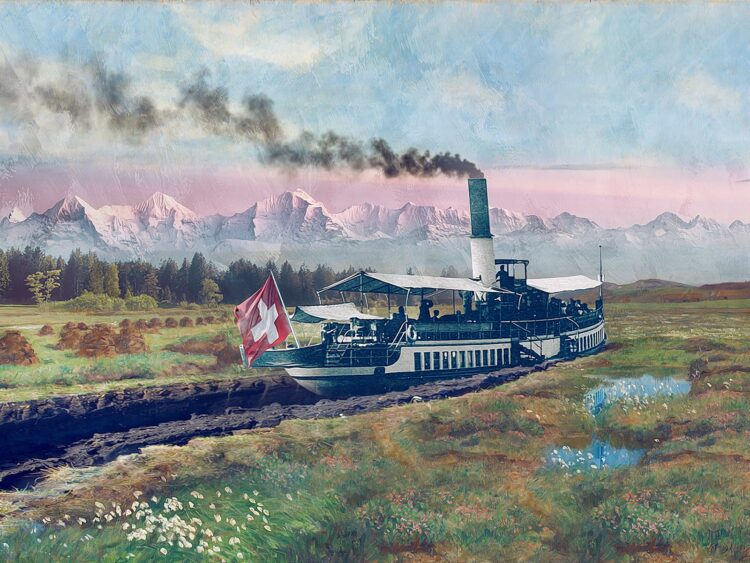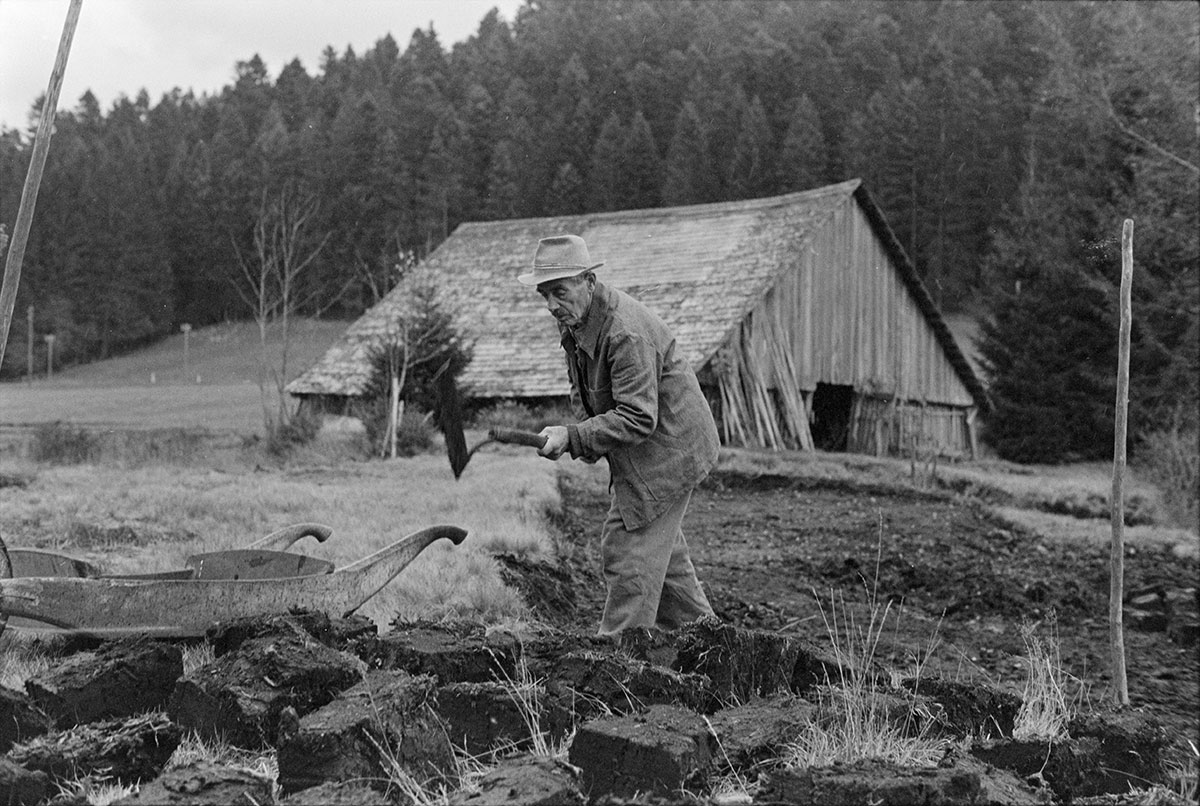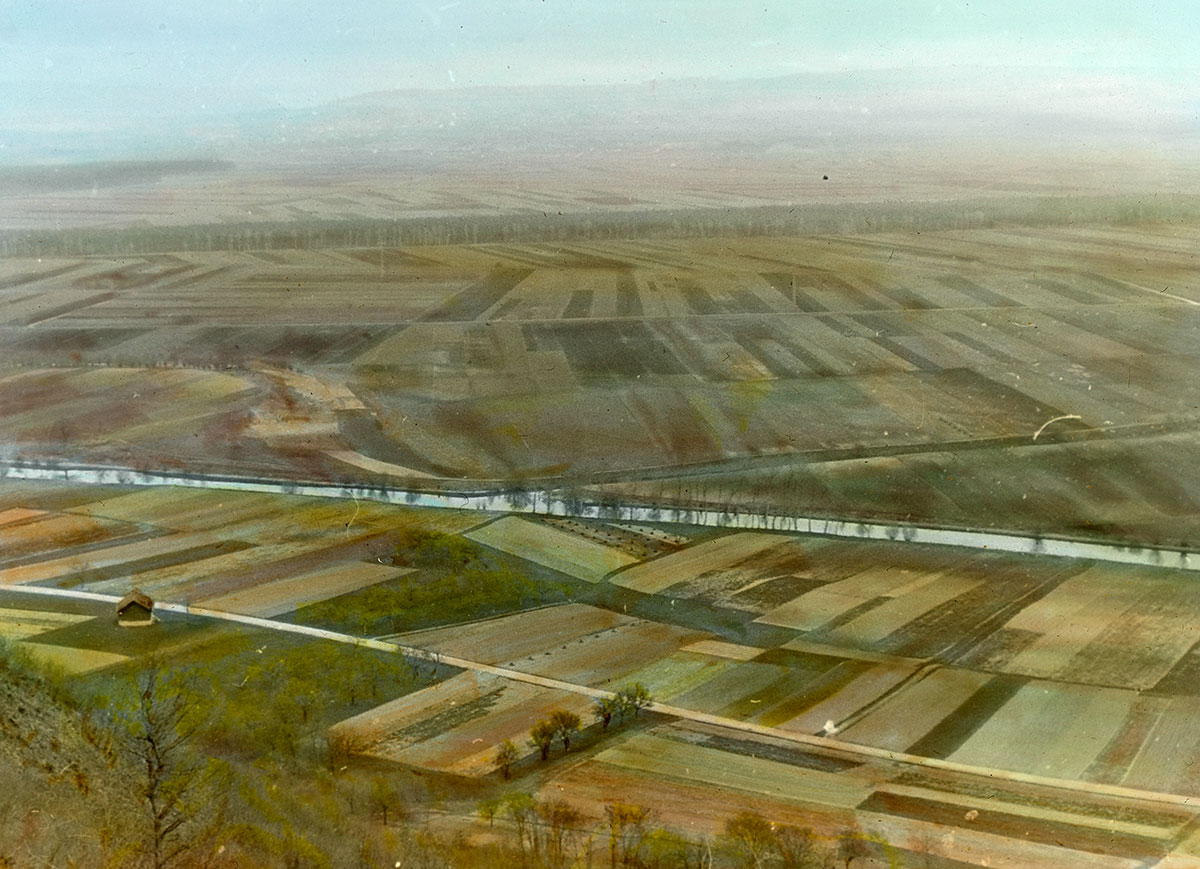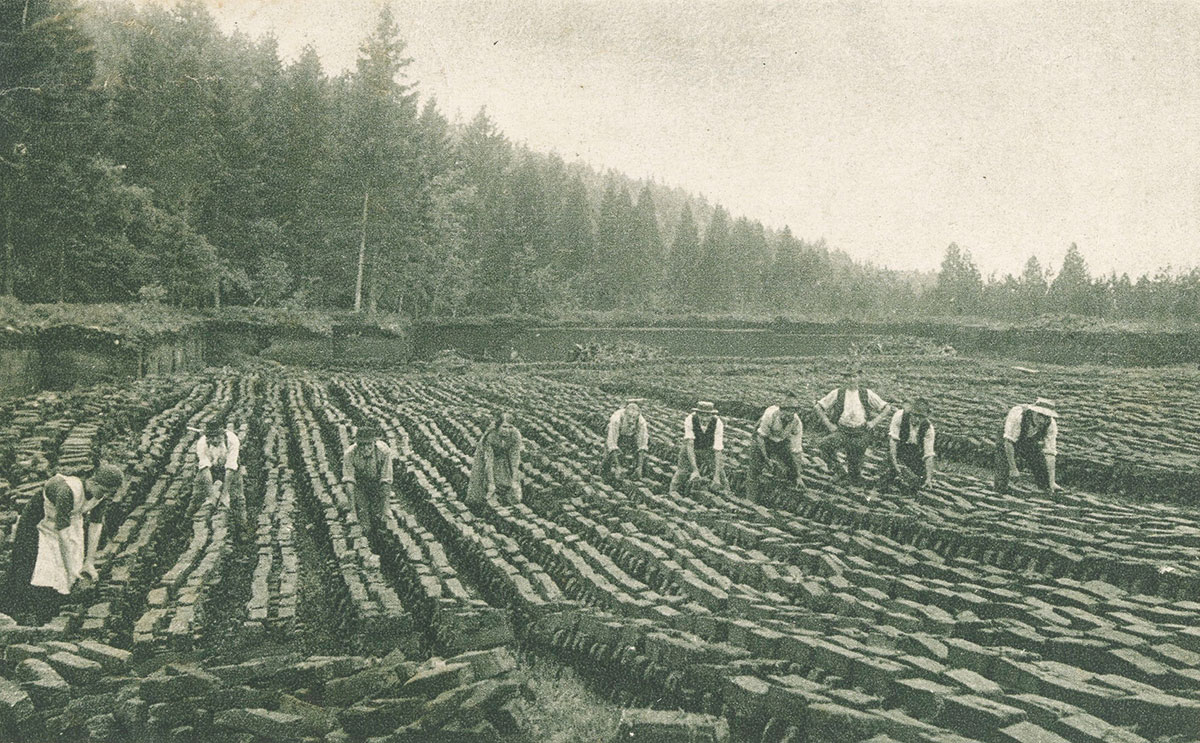
The energy source from the Swiss moors

The threat of an energy shortage is nothing new to Switzerland, where demand has repeatedly exceeded supply over the years. However, one energy source that has always proved especially popular in times of crisis is now off limits – peat.
The history of peat extraction in Switzerland began with the overexploitation External linkof the local forests and the resulting wood shortage, coupled with population growth towards the end of the 17th century. This was relatively late, as peat was already being used much earlier in northern Germany and the Netherlands, for example. Peat is made up of partially decomposed plant remains and is the first stage in the formation of coal. Dry peat can be used as a heat source.
SWI swissinfo.ch regularly publishes articles from the Swiss National Museum’s blog External linkdedicated to historical topics. The articles are always written in German and usually also in French and English.
In Bern, a committee known as the ‘Holzkammer’ first assumed responsibility for peat instead of wood in 1737. The role of the Holzkammer was to oversee the delivery of the required firewood and constructional timber to the people and business community. The first cuts of peat, or ‘underground wood’ as it was known colloquially, were extracted in Lörmoos, some kilometres to the northwest of Bern, and used to heat the two city hospitals. However, the wood shortage persisted so the Holzkammer had no option but to expand its peat-cutting operations into other moorland areas.
A decree was issued in 1786 to provide the needy in the city with more peat instead of wood and to use peat for heating the official buildings. This further increased demand for the commodity. The Holzkammer was again charged with finding new moorland areas, which it located in Schwarzenegg to the northeast of Thun in the Zulg Valley. This area bears many of the features left from the last Ice Age.
Numerous moraines stretch over the hills where the Emmental valley meets the Bernese Oberland. As a result, there are many hollows where, not least due to the clayey, impermeable subsoil, many moorlands have formed. It was from one of these moors that Bern received about 1,500 cartloads of peat every year.

The area actually predestined for peat extraction was in the west of the canton: the Grosses Moos (Great Marsh) was the enormous marshland contained by the lakes at the foot of the Jura. This is where the communities bordering the marsh began to cut peat in the early 18th century, mostly for their own use.
The first Jura water correction from 1868 to 1891 drained about 400 square kilometres of moorland. That was propitious timing for peat-cutting as industrialisation and the emergence of the railwayExternal link and steamships as means of transport generated insatiable demand for combustible material. This marked the onset of the golden age of peat.

The Berner Torfgesellschaft (BTG) (Bernese peat association) was founded in 1857, thus preceding the water correction. Its primary goal was to extract and sell the abundance of peat in the Hagneck area. However, the association was also able to acquire exploitation rights in many other places.
Mechanised transport was soon needed to send the industrial quantities of peat to their destinations. The association purchased a paddle steamer for this purpose and used the railway for the final leg of the journey. It concluded a contract of purchase with the Bernese State Railway in 1864 for about 8,000 klafters (a historical unit corresponding to about 1.8m length) per annum. The railway company used the peat to power its twelve steam locomotives.

Schwarzenegg peat also sold well: the steam ship company had converted some of its Lake Thun shipsExternal link to peat-fired power and was a major buyer of the commodity. The company even had its own marshland, Untermoos in Wachseldorn.
However, the improvements in transport brought about by steam power enabled coal to emerge as a viable alternative to peat. In 1850, coal accounted for 3% of the energy market in Switzerland ‒ making it considerably less popular than peat, which held a market share of 9% ‒ and did not really feature in the Swiss energy landscape.
However, the rapid expansion of the rail network saw coal imports, mainly from Germany, climb sharply within a short time. Foreign coal, in contrast to Swiss-mined coal, was cheap and better quality. At the start of the 20th century, coal accounted for almost 80 percent of Switzerland’s total energy consumption.

The significance of peat as an energy source plummeted once coal took over, although it was still extracted in small quantities and used for heating, usually in rural areas. Ships on Lake Thun continued to use peat up to 1889.
Peat consumption plus the continual drainage for land reclamation caused many moors to disappear during the 20th century. It was not until the Rothenturm initiativeExternal link in 1987 to ‘protect Swiss moorlands’ that peat extraction was finally banned and Switzerland’s remaining moors, just under 10% of its original moorland, received lasting protection.
Author: Reto Bleuer is a volunteer at canton Bern’s archaeological service. The original article was publishedExternal link by the Swiss National Museum.

In compliance with the JTI standards
More: SWI swissinfo.ch certified by the Journalism Trust Initiative





























You can find an overview of ongoing debates with our journalists here . Please join us!
If you want to start a conversation about a topic raised in this article or want to report factual errors, email us at english@swissinfo.ch.